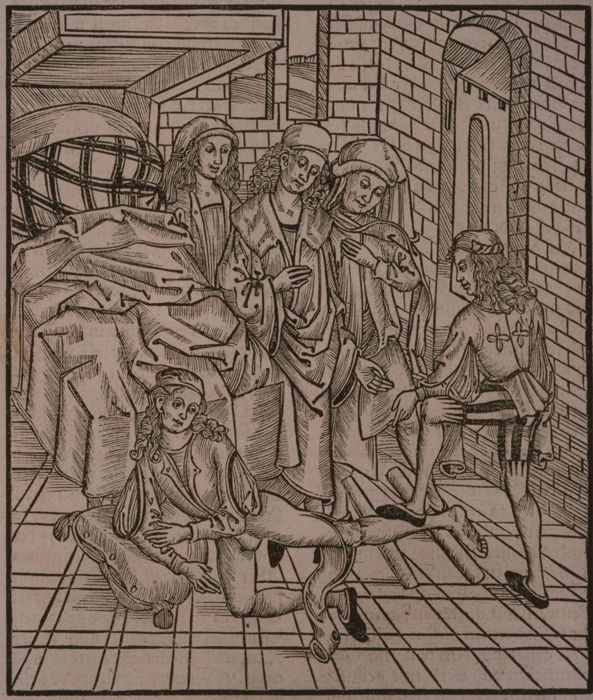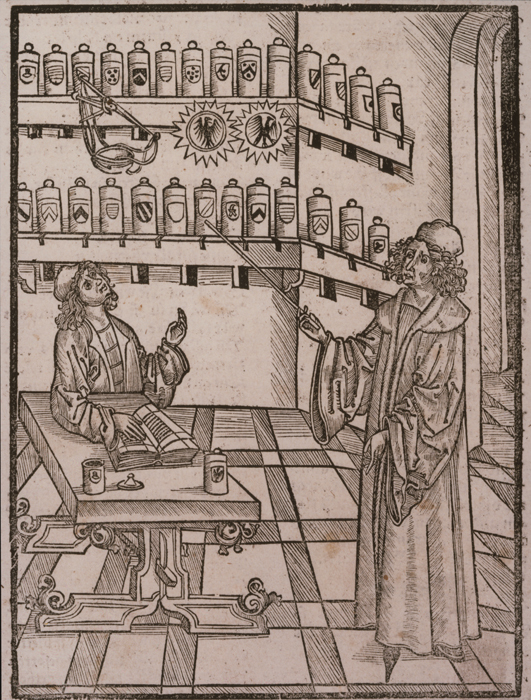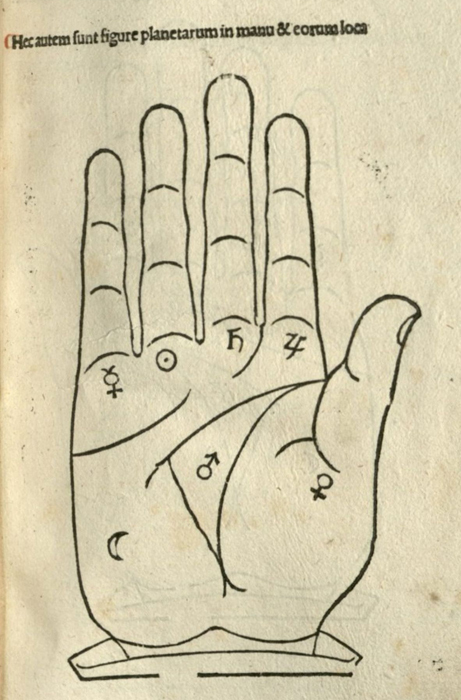Page 3
Brunschwig's Book of Surgery was intended to be a manual of general practice for the independent surgeon and is the first printed German text on this subject. The Cirurgia contains information on the treatment of wounds, dislocations, fractures, and amputations and includes one of the earliest detailed accounts of the treatment of gunshot wounds.
This small pamphlet on syphilis [A Fine Treatise on the Origin of the French Evil] was enormously popular, appearing in four different editions in Latin and German in the last years of the fifteenth century. The pamphlet was printed during the course of a syphilis epidemic which originated in France and reached Germany in 1495. Joseph Grünpeck theorized that the outbreak was caused by a disastrous conjunction of the planets Jupiter and Saturn.
Probably the most popular medical work of the fifteenth century, the Latin Regimen sanitatis [Rule of Health] was translated into almost every European language following its first appearance in print in 1480. Nearly forty different editions were produced before 1501. Composed in the twelfth or thirteenth century, the Regimen is a didactic poem of domestic medical practice, containing commonsense rules and advice on diet for the maintenance of good health.
Chiromancy or palmistry is the study of the lines and shapes of the human hand to determine an individual's characteristics and analyze past, present, and future events. Books on the subject were among the most popular incunables produced. This brief manual on chiromancy identifies the lines of the hand and associates areas of the palm with the sun, moon, and planets as an aid to astrological divination.
The Canon medicinae, a compendium of medical knowledge and a guide to clinical teaching, was derived from Galenic and Hippocratic writings and infused by Avicenna with Arabic medical lore. The Canon includes detailed disquisitions on pathology, physiology, hygiene, therapeutics, and materia medica. The first three books were printed in Latin in 1472 and a complete edition appeared the following year. An encyclopedic and systematic treatise on medicine, it was the fundamental text in medieval and early Renaissance medical education. The text itself was read in the medical schools at Montpellier and Louvain as late as 1650, and Arnold C. Klebs described it as "one of the most significant intellectual phenomena of all times." Avicenna's Canonwas translated into Hebrew in 1279.
This edition of Avicenna’s Canon is its first appearance in print as well as the first printing of a medical treatise in Hebrew—and the only one produced during the fifteenth century. Hebrew printing in the 15th century was restricted to Italy and the Iberian peninsula; after the expulsion from Spain in 1492, printers in Italy and Portugal produced a very small number of works. The Gunzenhauser family founded the first Hebrew press in Naples in 1486; this edition of the Canonwas one of the last Hebrew books printed in that city.
This broadside sheet was printed during an epidemic of plague in the German city of Augsburg in the early 1470s. The woodcut depicts Saints Sebastian and Roch (accompanied by an angel), comforting those struck down by the plague. Prayers to the two saints are printed below. The aid of Saint Sebastian, a third-century martyr, was frequently invoked in cases of plague, and the intercession of Saint Roch (d. 1327) was said to be responsible for the end of an outbreak in the city of Constance in 1414.
The Herbolarium describes the medicinal uses of common herbs and plants with woodcut illustrations of each. The work was once attributed to the medieval physician Arnaldus de Villanova (d. 1311) because of this imaginative frontispiece depicting a meeting of Arnaldus with the eleventh-century Arabian physician Avicenna. There is, in fact, no single author for the Herbolarium; it is a compilation of classical and medieval botanical lore from many sources. This volume appears to be the first of the 541 incunables purchased, donated, or bequeathed to the Boston Medical Library by Dr. William Norton Bullard.







